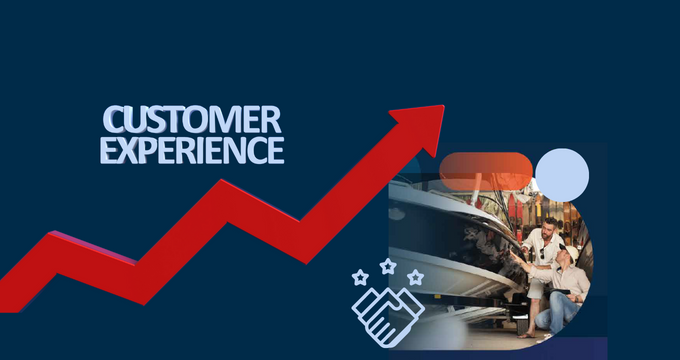
In the retail dealership environment, we often focus on the customers interested in purchasing a new boat. We continue to stay in contact with them and help them progress through the sales cycle until they purchase and take delivery. At that point, the service department takes over managing the customer and becomes the face of the business. The service team can make a lasting impression on your customers. They typically are the last interaction your customers have with your dealership.
It’s no secret that a superior customer experience will keep customers coming back. A recent study from KPMG stated: “In today’s retail environment, the phrase ‘customer is king’ has never been more true.”
When price alone is no longer a differentiator, the customer experience must win out. Superior service, convenience, personalization, speedy delivery, and choice are what drive every sale and secure repeat business. In its survey of retail businesses, KPMG asked what initiatives would be the most significant driver of the company’s revenue growth in the next three years. Customer retention ranked the highest at 52 percent. Customer acquisition and product innovations were next with 45 percent and 30 percent, respectively.
Challenging Conditions
With the recent headwinds of Covid, conditions for service have been challenging. With part suppliers and manufacturers experiencing delays in product availability, the turnaround time for some services has been extended. For many parts of the country that have short boating seasons, the longer a customer’s boat is waiting for service, the less time he or she can spend on the water, thus having a direct effect on the customer’s boating and dealership experience.
For the last couple of years, we have been tracking the amount of time that boats have been spending in dealership service departments. In looking at the past 24 months, we compared the most recent 12-month period to the prior 12-month period. During the most recent 12 months (Oct. 2021-Sept. 2022), a boat averaged 48 days in the shop, with the prior 12 months (Oct. 2020-Sept. 2021) averaging 46 days. That’s an increase of two days that a customer’s boat is staying at the dealership for service just in the past year.
Not all dealers were down, however. In surveying close to 600 dealers across the U.S. and Canada, we found that over 200 dealers had improved significantly when comparing the same 12-month periods. The best-performing dealers improved by 80 percent, resulting in more customers on the water for more of the season.
In reviewing the difference between dealerships that improved and those that did not, we can attribute the former’s success to a few key best practices that, if implemented, can help your service department as well.
Here are a few highlights:
The Right Process
Having the right processes in place will allow you to manage the various economic, personnel, and other environmental factors when trying to deliver on the customer experience. Having a process map of the customer’s journey within your service department is critical to managing customer expectations and identifying areas that can be improved on.
Throughout the process, make sure that you provide a tailored experience to each customer recognizing his or her value to your business. As you provide a consistent process for your team, the customer experience will change from a process to an organizational mindset.
The Right Tools
Just like a technician needs wrenches and other tools to perform efficiently, your shop management team needs the right tools to perform in its role. Having a complete software package that allows management to streamline the check-in process with mobile devices, a scheduler that works with status updates visible to all dealership employees, and automation tools to assist with customer communication to ensure they are kept up to date with the service progress is critical.
The Right Interactions
Providing a consistent experience for your customers will keep them coming back through the door time and time again. For each customer, identify how he or she chooses to interact with your business. This may be in person, remotely via text or email, or a combination. Make a preference note for each and continue their interaction experience after they leave your shop. This will ensure they return and provide good reviews with their peers.

